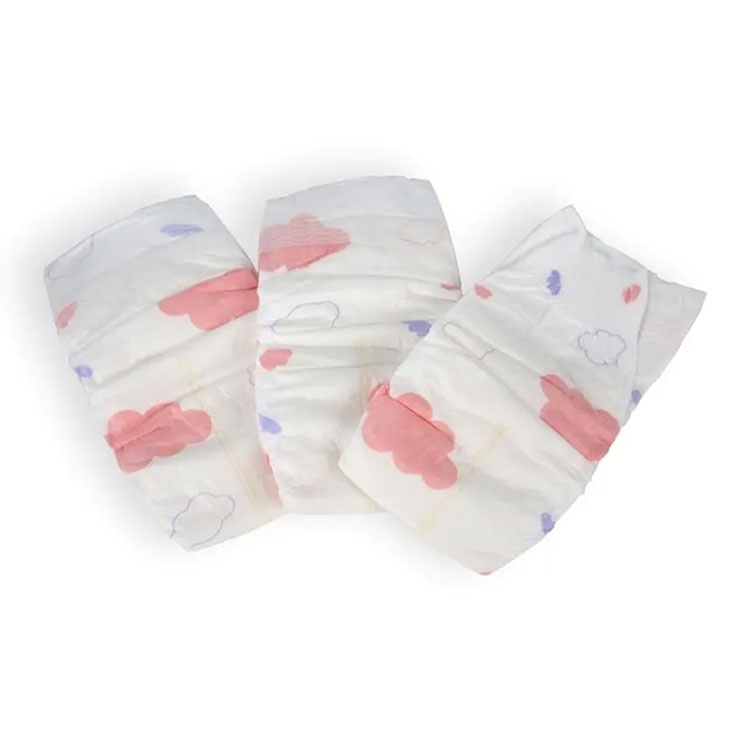Although disposable adult diapers and baby diapers are both incontinence care products, they have significant differences in design concepts and functional configurations due to different physiological characteristics and usage scenarios of users, and accurately match the care needs of different groups.

Size and fit design are the most intuitive differences between the two. Adult diapers are based on waist and hip circumference as core parameters, usually divided into three sizes: large, medium, and small. The waist circumference stretch range is 60-120 cm, which can be adapted to adults of different body shapes. It adopts a high waist design (covering 5-8 cm above the waist) and elastic side waist stickers (which can be repeatedly pasted 5-8 times), which can fit the body curve closely and reduce the risk of side leakage during activities. Baby diapers are divided into different sections according to weight (e.g. NB size is suitable for babies weighing 0-5 kg), and the design of the pants focuses more on the tightness of the leg opening to avoid strangulation of delicate skin.
The absorption capacity and structural layout are obviously different. The absorption core of adult diapers is 60-70 cm long, the absorption capacity is generally 1500-2000 ml, and the front absorption layer is 20% thicker, which is optimized for adult urination habits. The core uses composite fluff pulp and high molecular absorbent resin (ratio 7:3), which quickly locks urine and prevents back seepage, and the surface dryness is 30% higher than that of baby diapers. The absorption capacity of baby diapers is mostly 500-800 ml, the core length is 40-50 cm, the center of gravity is lower, which is suitable for the urination characteristics of babies lying flat, and the absorbent resin accounts for a higher proportion (5:5), pursuing a light and thin experience.
The material selection focuses on different emphases. The surface of adult diapers is mostly made of non-woven fabrics and pearl pattern design, which enhances the sense of friction to reduce the skin contact area and reduce the risk of bedsores; the air permeability of the bottom breathable film reaches 5000 g/m2・24 hours, which is suitable for long-term bedridden people. The surface of baby diapers emphasizes softness, and mostly uses hot air non-woven fabrics, which feel delicate like cotton, and adds natural skin care ingredients (such as vitamin E and glycerin) to prevent red buttocks.
Functional additions have different focuses. Adult diapers are often equipped with wetness indicator strips (change color when exposed to urine) to facilitate caregivers to observe the timing of replacement; some styles have three-dimensional leak-proof partitions (3-4 cm in height) to deal with side leakage when turning over at night. Baby diapers focus on portability. The Velcro buckle design can quickly adjust the tightness, and most of them have urine indicator lines, so parents can intuitively judge the replacement time. Pants-type baby diapers also have an easy-to-pull design, which is suitable for active babies.
The difference between the two stems from different core needs: adult diapers focus on "leakage-proof, large capacity, and durability", taking into account the convenience of care; baby diapers focus on "softness, breathability, and fit", and pay attention to skin-friendliness. When choosing, you need to consider the user's age, activity level, and care scenarios to achieve the best care effect of the product.






